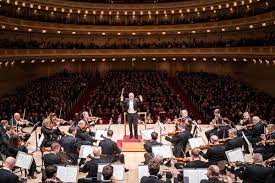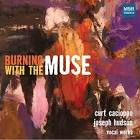Artistic Expression: Unleashing the Power of Creativity
Artistic expression is a fundamental aspect of the human experience, allowing individuals to communicate, explore, and connect with the world around them in profound ways. It is a medium through which emotions, ideas, and experiences can be transformed into tangible forms that resonate with others.
In its purest form, artistic expression is a deeply personal and authentic means of communication. Whether it be through painting, sculpture, music, dance, writing, or any other creative outlet, artists are able to tap into their innermost thoughts and feelings, translating them into a language that transcends barriers.
One of the most remarkable aspects of artistic expression is its ability to evoke emotions and provoke thought. Art has the power to challenge societal norms, question established beliefs, and inspire change. It can serve as a mirror reflecting the complexities of our world or as a catalyst for introspection and self-discovery.
Moreover, artistic expression has the unique ability to foster empathy and understanding among individuals from diverse backgrounds. Art has no language barriers; it speaks directly to our hearts and souls. Through artistry, we can gain insight into different cultures and perspectives, fostering tolerance and appreciation for our shared humanity.
Artistic expression also serves as an outlet for personal growth and healing. It provides individuals with an avenue to process their experiences and emotions in a safe environment. The act of creating art can be cathartic – a way to release pent-up energy or express complex emotions that may otherwise be difficult to articulate.
In addition to its individual benefits, artistic expression plays an essential role in society as a whole. It enriches communities by adding beauty and vibrancy to public spaces while also serving as a catalyst for cultural exchange. Artistic endeavors often bring people together in celebration or contemplation – fostering a sense of unity among diverse groups.
It is crucial that we recognize the importance of supporting artistic expression in all its forms. By providing platforms and opportunities for artists to share their work, we encourage the growth of creativity and ensure that diverse voices are heard. Art education plays a vital role in nurturing artistic expression from a young age, fostering imagination and critical thinking skills that extend far beyond the realm of art itself.
In conclusion, artistic expression is a powerful force that has the ability to transform individuals and societies alike. It allows us to communicate, explore, and connect with the world on a deeper level. By embracing and celebrating artistic expression, we can unlock the full potential of human creativity and create a more vibrant and empathetic world for all.
Exploring Artistic Expression: Answers to Common Questions
- What is creative artistic expression?
- What are the 7 elements of artistic expression?
- What is the purpose of artistic expression?
- What is an example of an artistic expression?
What is creative artistic expression?
Creative artistic expression refers to the act of using one’s imagination, skills, and personal vision to create original and unique works of art. It encompasses a wide range of artistic disciplines, including visual arts (such as painting, drawing, sculpture), performing arts (such as music, dance, theater), literary arts (such as writing, poetry), and more.
At its core, creative artistic expression involves the exploration and communication of ideas, emotions, and experiences through various mediums. It goes beyond mere replication or imitation and instead encourages artists to bring their own unique perspectives and interpretations to their work.
Creative artistic expression allows individuals to break free from traditional boundaries and conventions. It encourages experimentation, innovation, and pushing the limits of what is considered possible or acceptable in art. It is about embracing individuality and finding one’s voice in the creative process.
This form of expression is deeply personal and subjective. It reflects an artist’s inner thoughts, feelings, beliefs, and experiences while offering a glimpse into their worldview. Artists use their chosen medium to convey messages or evoke specific emotions in their audience.
Moreover, creative artistic expression often involves a level of skill development over time. Artists hone their craft through practice, study, and exploration. They may experiment with different techniques or styles to find their own unique artistic language.
While creative artistic expression can be a solitary endeavor for some artists who prefer working alone in their studios or writing spaces, it can also be collaborative. Artists may come together with others from different disciplines to create interdisciplinary works that combine various art forms.
Ultimately, creative artistic expression serves as a means for individuals to communicate ideas that may be difficult or impossible to express through other means. It allows for freedom of thought and encourages dialogue between artists and audiences. It has the power to inspire change, challenge societal norms, provoke thoughtfulness or emotional responses while enriching our cultural landscape with diversity and innovation.
What are the 7 elements of artistic expression?
The 7 elements of artistic expression, also known as the elements of art, are the foundational components that artists use to create visual and aesthetic experiences. These elements are used across various artistic disciplines, including painting, sculpture, photography, and design. Here are the 7 elements:
- Line: Line refers to the mark made by a moving point. It can be straight or curved, thick or thin, continuous or broken. Lines can define shapes, create texture, convey movement or direction, and express emotions.
- Shape: Shape refers to the two-dimensional area created by enclosing lines or through the use of color and value changes. Shapes can be geometric (circles, squares) or organic (irregular and free-flowing). They provide structure and form within a composition.
- Form: Form refers to three-dimensional objects that have height, width, and depth. It is achieved through techniques such as shading and perspective. Forms can be geometric (cubes, spheres) or organic (human figures).
- Color: Color is one of the most powerful elements in art. It evokes emotions and creates visual interest. Artists use color theory to explore how colors interact with each other and with their surroundings. Colors can be warm (red, orange) or cool (blue, green), bright or muted.
- Value: Value refers to the lightness or darkness of a color or tone in an artwork. It helps create volume and depth by using contrasts between light and shadow. Artists use shading techniques to manipulate value in their compositions.
- Texture: Texture refers to the surface quality of an artwork that can be perceived through touch or visually implied through techniques such as brushstrokes or patterns. Artists use texture to add interest and evoke tactile sensations.
- Space: Space refers to the area within a composition that is occupied by objects or figures as well as the area around them that creates a sense of depth and perspective. Artists use techniques such as overlapping, size variation, and atmospheric perspective to create the illusion of space.
These elements are not mutually exclusive; they often work together to create a cohesive and impactful artistic expression. By understanding and utilizing these elements, artists have a versatile toolkit to convey their ideas, emotions, and experiences through their chosen medium.
What is the purpose of artistic expression?
The purpose of artistic expression is multi-faceted and can vary from artist to artist. However, there are some common overarching purposes that artistic expression serves:
- Communication: Artistic expression provides a means of communication that goes beyond words. It allows artists to convey emotions, ideas, and experiences in ways that may be difficult to articulate verbally. Art has the power to transcend language barriers and connect with people on a deeper level.
- Exploration and Discovery: Artists often use their creative pursuits as a way to explore new concepts, challenge existing norms, and push boundaries. Through artistic expression, individuals can delve into uncharted territories of thought and imagination, discovering new perspectives and insights along the way.
- Emotional Release: Creating art can be an intensely personal and cathartic process. It provides a way for individuals to channel their emotions into a tangible form, allowing for release and healing. Artistic expression offers an outlet for self-expression, enabling artists to process their experiences and find solace or empowerment through their work.
- Reflection and Commentary: Art has long been used as a medium for social commentary and reflection on the human condition. Artists often engage with societal issues or personal narratives through their work, prompting viewers to contemplate important themes or question established beliefs.
- Aesthetics and Beauty: Artistic expression also serves the purpose of adding beauty and aesthetic value to the world around us. It enhances our environment by introducing visual or auditory elements that evoke pleasure or inspire awe. The pursuit of beauty itself can be a driving force behind artistic endeavors.
- Cultural Preservation: Artistic expression plays a crucial role in preserving cultural heritage by documenting traditions, stories, and historical events through various art forms. It ensures that cultural practices are passed down from generation to generation, fostering a sense of identity and continuity.
- Entertainment: Artistic expression entertains audiences by providing engaging experiences that captivate the senses. Whether it’s attending a concert, visiting a gallery, or watching a theatrical performance, art offers moments of joy, escapism, and shared experiences.
Ultimately, the purpose of artistic expression is as diverse as the artists themselves. It encompasses personal growth, connection with others, societal reflection, and the exploration of the human experience. Art has the power to inspire, challenge, provoke thought, and bring about positive change in both individuals and communities.
What is an example of an artistic expression?
An example of artistic expression can be found in the realm of visual arts, specifically in the form of a painting. Consider a vibrant and evocative piece that depicts a serene landscape at sunset. The artist skillfully uses colors, brushstrokes, and composition to convey a sense of tranquility and awe-inspiring beauty. Through this artwork, the artist expresses their emotional response to nature, inviting viewers to experience the same feelings of peace and wonder. The painting becomes a medium through which the artist communicates their unique perspective and invites others to connect with their vision of the world.




